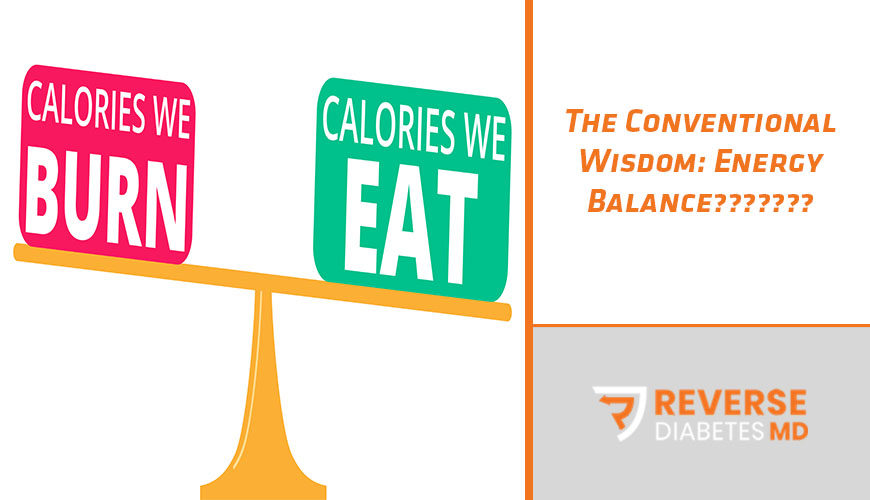“…from a thermodynamic perspective, it is clear that obesity is generally the consequence of small cumulative imbalances of energy intake and expenditure.”
2017, Obesity Pathogenesis: An Endocrine Society Scientific Statement
calories in > calories out
We overeat
Too much food, too little physical activity
Overeating
(Energy in > Energy out)
Obesity and the obesity epidemic
1880s: Max Rubner demonstrates the laws of thermodynamics holds true for living organisms and establishes the isodynamic law of calories
1890s: Atwater and Benedict show thermodynamics holds true for humans and pioneer the science of calorimetry
1900s: von Noorden declares caloric imbalance as the cause of obesity
“The ingestion of a quantity of food greater than that required by the body leads to an accumulation of fat, and to obesity, should the disproportion be continued over a considerable period.”
Louis Newburgh’s revelation:
“All obese persons are alike in one fundamental respect—they literally overeat.”*
Therefore…
Obesity is caused by either a “perverted appetite” (eating too much) or “lessened outflow of energy” (insufficient expenditure).
Why don’t obese people compensate by eating less or exercising more, which, after all, are under conscious control, too? Because they suffer, says Newburgh, from various human weaknesses such as overindulgence and ignorance.”
Focus of attention? Full-Body Energy Balance
Energy Imbalance? How Much?
“Weight management is all about balance— balancing the number of calories you consume with the number of calories your body uses or `burns off.’”
The Centers for Disease Control
20 lbs/decade?
2 lbs/year
1 lb of fat ~ 3500 kcal
(2 * 3500 kcal)/365 days
19.2 Kcal/day
The average American consumes about 2700 kcal/day
Are we really talking about a .007 positive energy imbalance causing 2/3 of all healthcare expenditure in the United States????
The average American is now 30 pounds heavier than in 1960 — an average weight gain of .53 pounds per year.
5 kcal/day or a .002 positive energy imbalance
There are no stranger phenomena than the maintenance of constant body weight under marked variation in bodily activity and food consumption.
Eugene Du Bois, Basal Metabolism in Health and Disease, 1936
Eating less doesn’t work
Weight loss achieved in trials of calorie-restricted diets is “so small as to be clinically insignificant.”
Cochrane Collaboration, 2002
Exercising more doesn’t work
“It is reasonable to assume that persons with relatively high daily energy expenditures would be less likely to gain weight over time, compared with those who have low energy expenditures. So far, data to support this hypothesis are not particularly compelling.”
AHA/ACSM 2007, Physical activity guidelines
The fatal flaw with the energy balance hypothesis?
Remember this?
“The fundamental cause of obesity and overweight is an energy imbalance between calories consumed and calories expended.”
The World Health Organization
an analogy? Wealth?
“The fundamental cause of wealth is a money imbalance between dollars earned and dollars spent.”
The World Economic Forum
dollars in > dollars out
The Alternative Hypothesis
Obesity is a disorder of excess fat accumulation
(Not energy balance, not over-eating, not sedentary behavior)
Gluttony and sloth are compensatory effects; they are not causes
German/Austrian hypothesis, pre-World War II
Gustav von Bergmann (1908), Julius Bauer
A hormonal/regulatory hypothesis
“Like a malignant tumor or like the fetus, the uterus or the breasts of a pregnant woman, the abnormal lipophilic tissue seizes on foodstuffs, even in the case of undernutrition. It maintains its stock and may increase it independent of the requirements of the organism. A sort of anarchy exists; the adipose tissue lives for itself and does not fit into the precisely regulated management of the whole organism… a lipomatous subject may die of starvation and still remain lipomatous.” Bauer, Archives of Internal Medicine, 1941.
“The effect after meals of withdrawing from the circulation even a little more fat than usual might well account both for the delayed sense of satiety and for the frequently abnormal taste for carbohydrate encountered in obese persons… A slight tendency in this direction would have a profound effect on the course of time.”
Russell Wilder, Mayo Clinic,1938
The hormonal/regulatory hypothesis
“…now more or less fully accepted, chiefly in Germany, by a number of leading investigators of metabolic diseases…”
Hugo Rony, Obesity and Leanness, 1940
“The current energy theory of obesity, which considers only an imbalance between intake of food and expenditure of energy, is unsatisfactory.”
“It is the distribution of energy in the body too which counts, not alone the rough imbalance between its intake and output.”
“The adipose tissue is not merely a passive storing place for reserve fat, but a living and active part of the body, with its own physiologic and pathologic processes.”
“An increased appetite with a subsequent imbalance between intake and output of energy is the consequence of the abnormal anlage rather than the cause of obesity.”
Bauer (1941)
The alternative hypothesis is another victim of World War II.
Insulin is “the principal regulator of fat metabolism.”
Rosalyn Yalow, Solomon Berson, 1965
Frayn, K.N. 2010. Metabolic Regulation: A Human Perspective, 3rd edition
Suppression of fat mobilization
The release of fatty acids from fat cells “requires only the negative stimulus of insulin deficiency.”
When insulin is secreted or chronically elevated, fat accumulates in the fat tissue.
When insulin levels drop, fat escapes from the fat tissue and the fat depots shrink.
We secrete insulin primarily in response to the carbohydrates in our diet.
“Carbohydrate is driving insulin is driving fat.”
George Cahill, 2005
“The most striking finding is that adipose tissue is exquisitely sensitive to the inhibitory effect of insulin on FFA release….”
“…insulin regulation of plasma FFA turnover/ oxidation is maximally manifest at low physiological plasma insulin concentrations….”
Bonadonna et al. 1990. Dose-dependent effect of insulin on plasma free fatty acid turnover and oxidation in humans. Am. J. Physiol. 259:E736-750.
Refined grains, starches and sugars
Dysregulation of insulin signaling
Metabolic Dysfunction: Excess fat accumulation, obesity, and the obesity epidemic, metal inflammation, pain, cellular degradation
So why does dieting fail… statistically, only 1:167 patients succeed
“All diets that result in weight loss do so on one basis and one basis only: they reduce total calorie intake.”
Textbook of Obesity, 2012
Diets that work?
Insulin reduction?
Calorie restriction (with carbohydrate restriction)
Carbohydrate restriction (without calorie restriction — i.e., LCHF/Leto)
Intermittent Fasting (TRF)
Fasting…
Raymond Greene, The Practice of Endocrinology, 1951
Foods to be avoided:
- Bread and everything else made with flour…
- Cereals, including breakfast cereals and milk puddings
- Potatoes and all other white root vegetables
- Foods containing much sugar
- All the sweets…
You can eat as much as you like of the following foods:
- Meat, fish, birds
- All green vegetables
- Eggs, dried or fresh
- Cheese
- Fruit…except bananas and grapes
The AMA trivializes this science as a debate about fad diets.
“fat is mobilized when insulin secretion diminishes” and yet low carbohydrate diets are “bizarre concepts of nutrition that should not be promoted to the public as if they were established scientific principles.”
JAMA, June 4, 1973. Vol 224, No 10.












